Classical Indian vs Later Achaemenid Persian
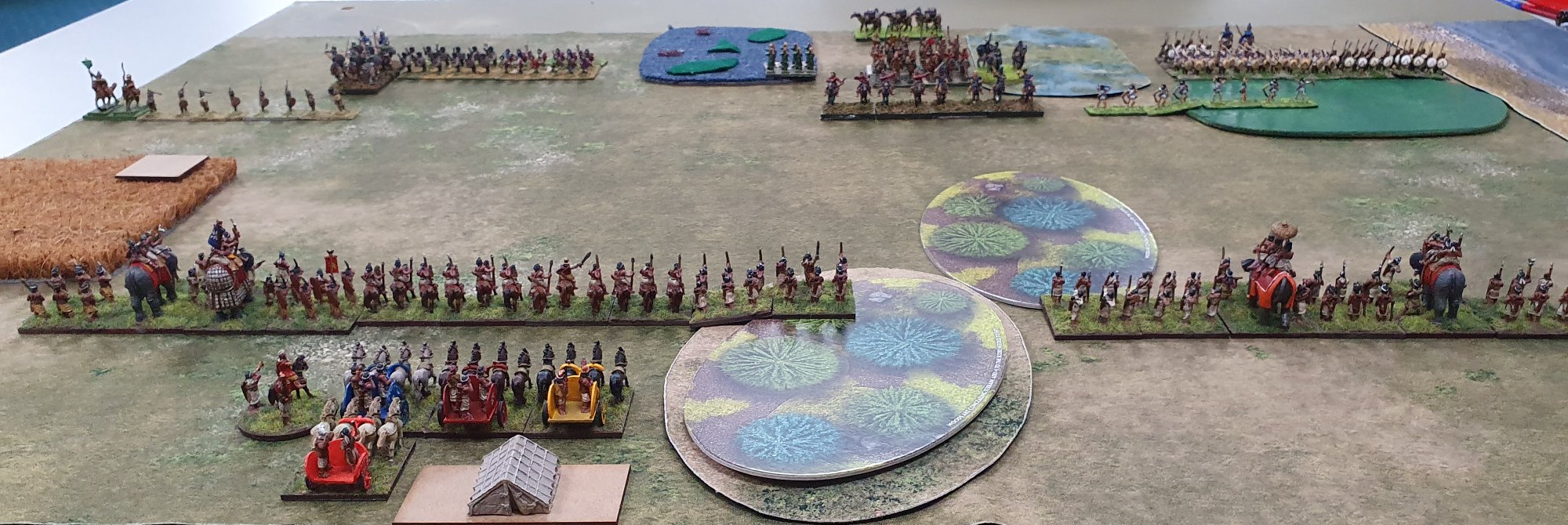
Classical Indians about to face Later Achaemenid Persians
Pregame
Phillip had suggested that we bring two lists, with each player having the first two corps identical in each list but the third corps different. We would decide on which variant after we knew which army we were playing.
This added an extra element of interest to the pre-game, because there are trade offs that you make to keep two corps in common. My two variants were essentially one list with six elephants, and the other with four elephants and four chariots. In the common portion of the lists I had one shooty corps and one close combat corps.
When I found that I was facing Later Achaemenid Persians I decided to take my chariots, as I had been painting and gluing their crew an hour before I left home and I wanted to use them and they should do okay against Persians.
My general battle plan would be to have a central shooting corps (with two elephants) and the close combat corps on one flank and the chariots on the other. I would stop the central corps at 4UD to shoot, and try to envelop one or both flanks.
In terms of terrain, I would want a coastal zone to secure one flank and reduce the board risk. For chariots I would want lots of open terrain.
Army lists
My Indian list
Phillip's Achaemenid Persian list was something like
The Game
Phillip won initiative and decided to attack in the forest.
In addition to the compulsory woods, I selected a coastal zone, a large brush and also a hill with woods. Phillip took an open hill two marshes. During the terrain adjustment we ended up moving the woods and the hill with woods towards the right. I had moved the second piece so as to keep the two together, both to protect a flank and to not break up my army into three.
This now meant that my initial deployment plan was shot. Rather than put the chariots in the flank, I was going to use them like cataphracts and put them in the centre.
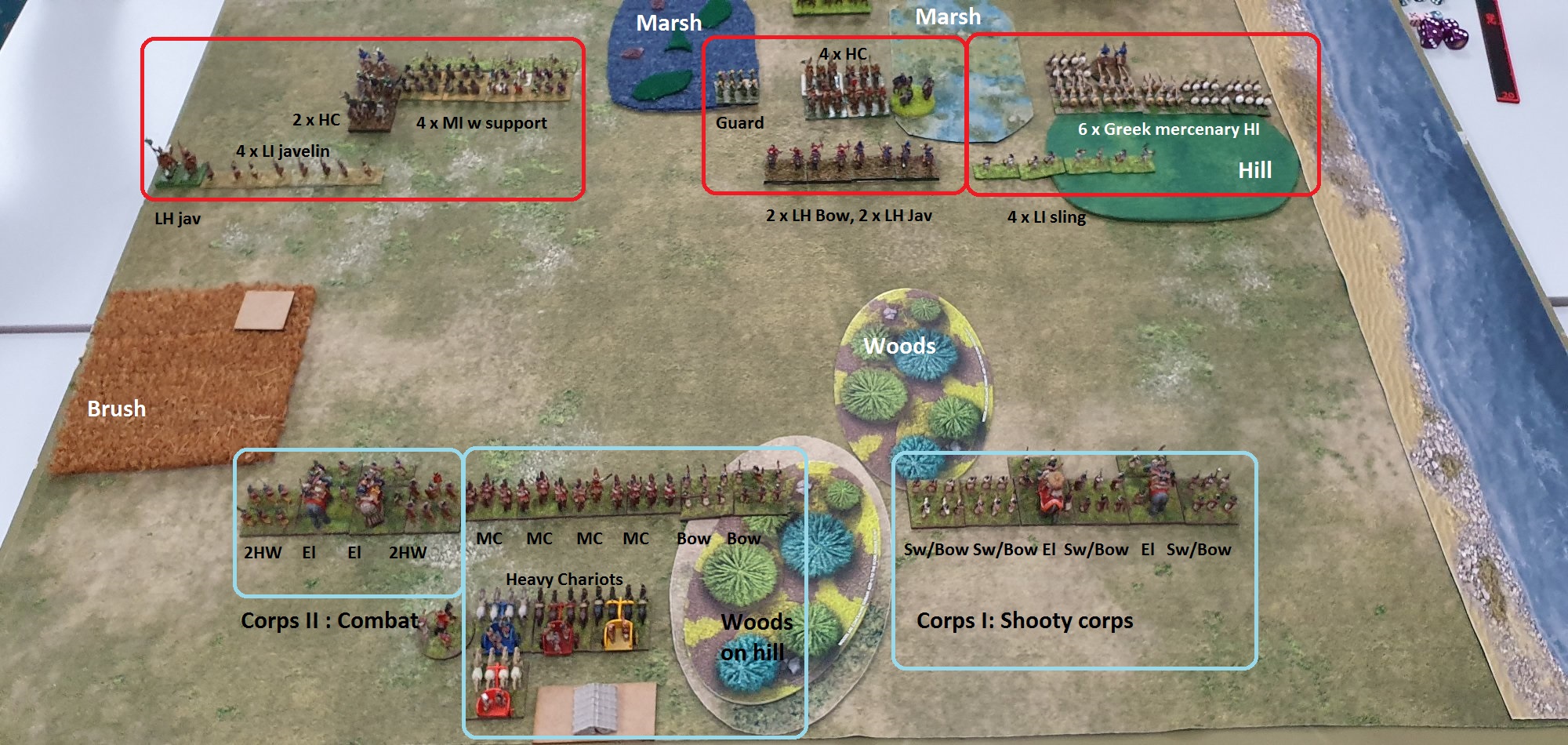
Initial Deployment
My first deployment was the combat elephant corps. This left me with a fairly tight space to deploy the Heavy Chariots, so I had to have one unit behind. I put the medium cavalry in front of the chariots to protect them from enemy skirmishers trying to make the impetuous units charge.
I didn't realise that you can't shoot through more 1UD of cover, so I was planning on having both the mediocre bow and the mixed bow units operating out of the woods. If I had realised, I would probably have deployed the shooty corps just to the right of the woods.
Phillip was also hampered by terrain, and so had to have his heavy cavalry operating in groups two deep, and have one unit of Greek hoplites behind the rest.
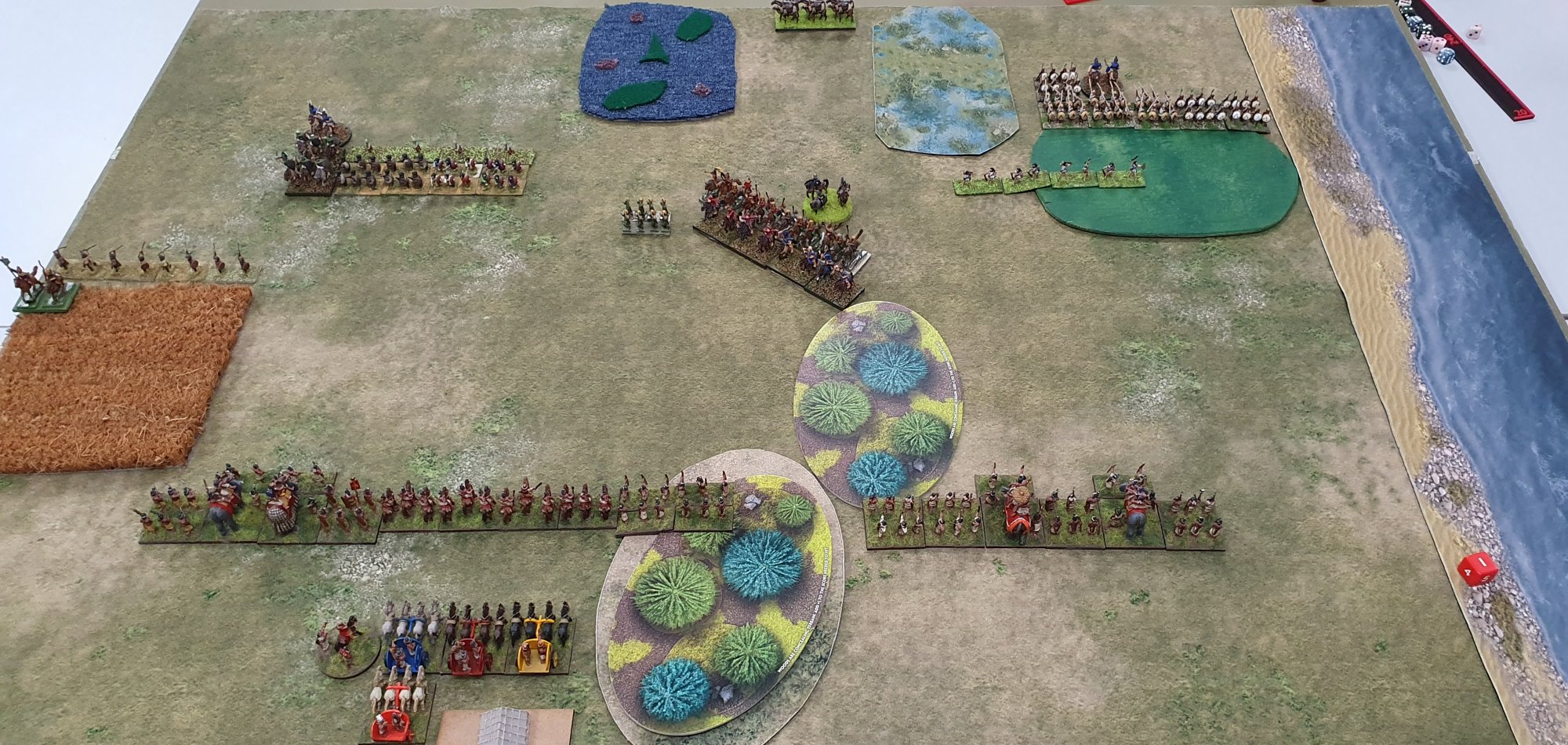
End of Persian Turn One
The general for the Greek mercenaries was unreliable, and rolled a 1. This meant that that couldn't move. However the rest of the Persian army advanced. On my left flank the light troops were trying to work around the flank.
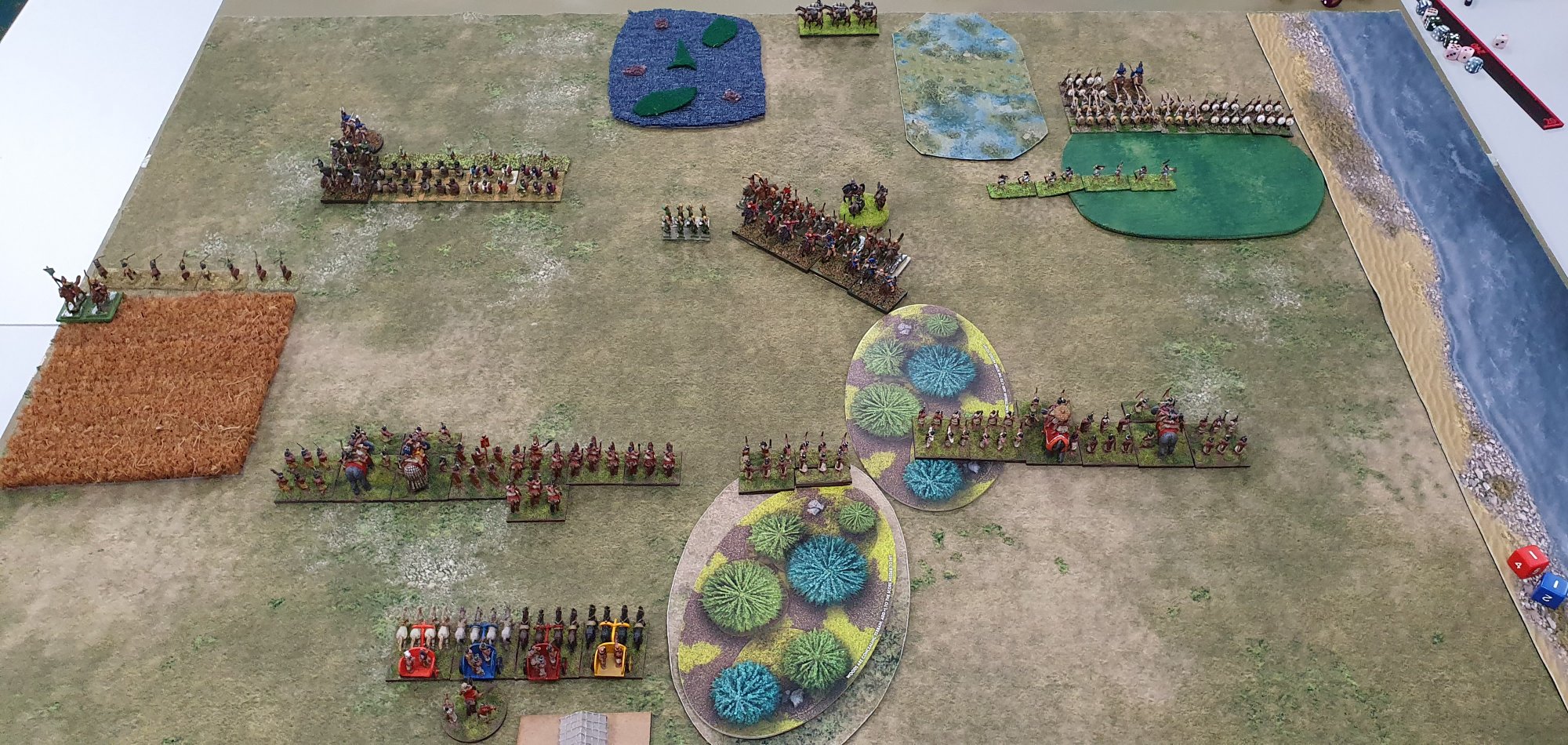
End of Indian Turn One
In my turn, I didn't want to be fighting the light infantry in the brush, so I moved forward my battle line and slid to the right. This left the medium cavalry cramped by the woods so I had to contract them as they moved forward. The heavy chariots then had enough room to extend their line.
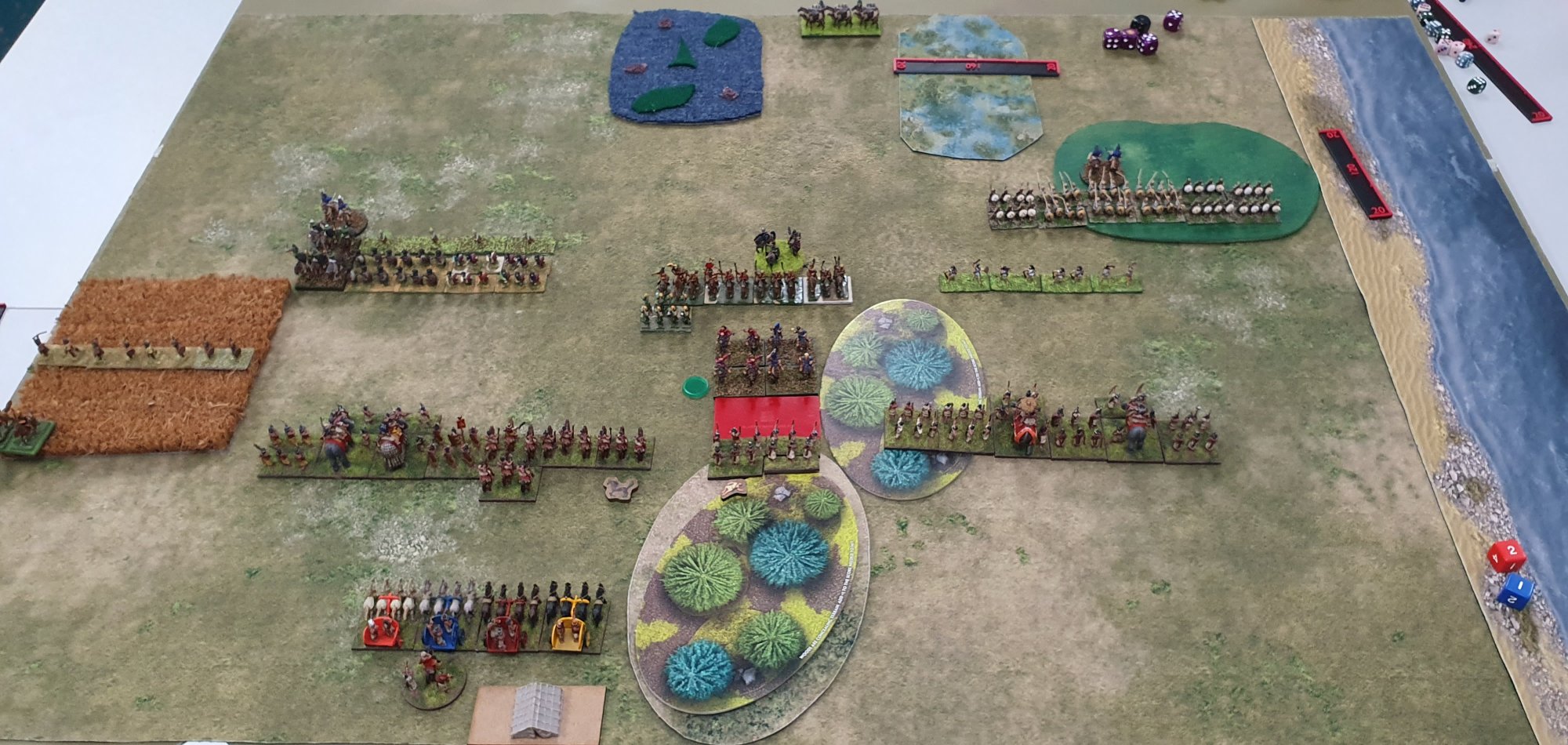
End of Persian Turn Two
The Persian commander used two pips to get the Greeks going, and they became reliable and moved forward (Phillip rolled 6's for each command). The rest of the Persian army also moved forward and the light infantry claimed the terrain and the light horse on the flank was starting to get past my flank.
In the shooting I took a hit on the medium cavalry and also one unit of mediocre bow. In response I was able to inflict one hit on the Bactrian light horse.
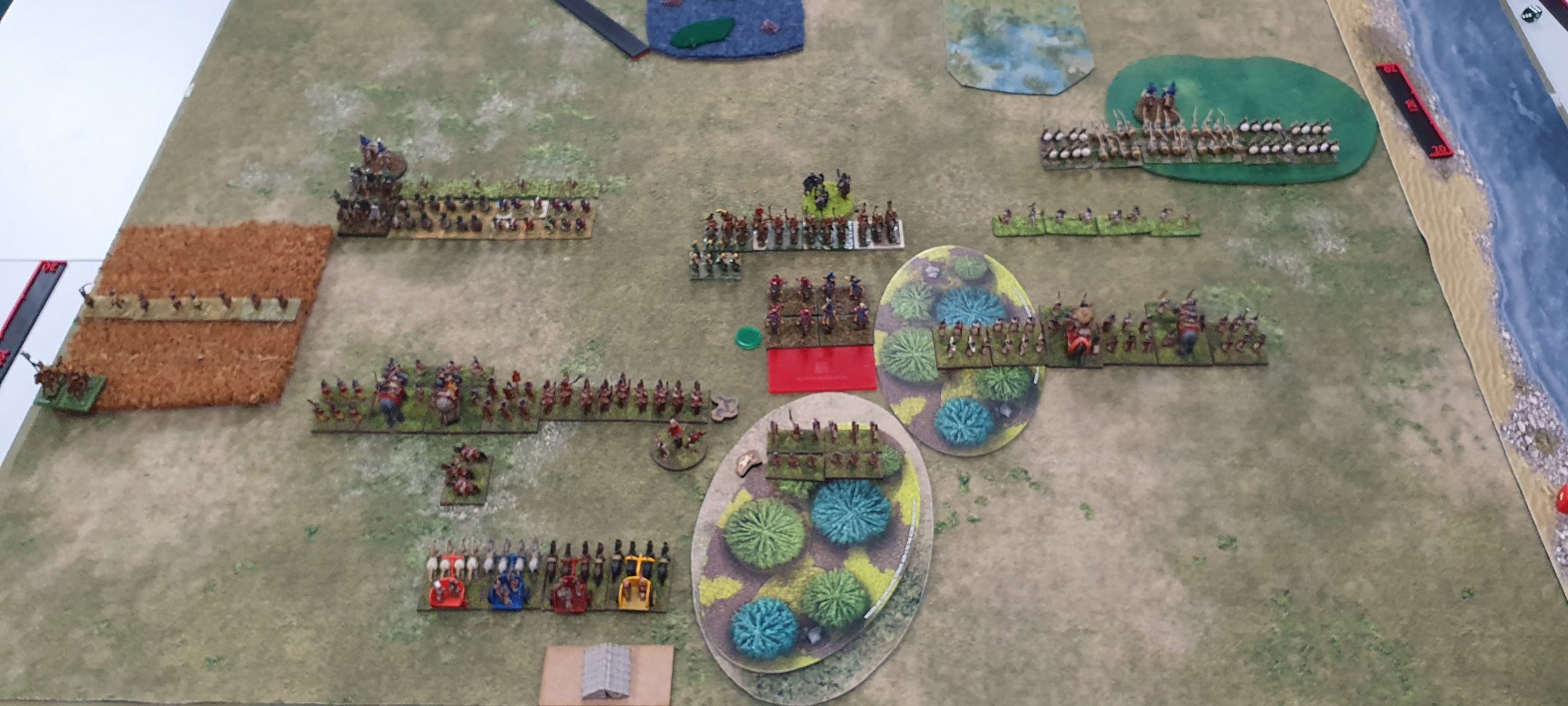
End of Indian Turn Two
I dispatched a single unit of medium cavalry to deal with the flanking light horse. With my archers sitting just out of the woods I didn't want to risk a charge from the heavy cavalry, so they turned around to move deeper into the woods.
My combat corps did not want to move up and let the light infantry potentially attack in the rear so they stayed put. On the right flank I moved up the shooting corps to get into bow range. This might have been the turn when I found that my line of sight was restricted to 1UD in woods.
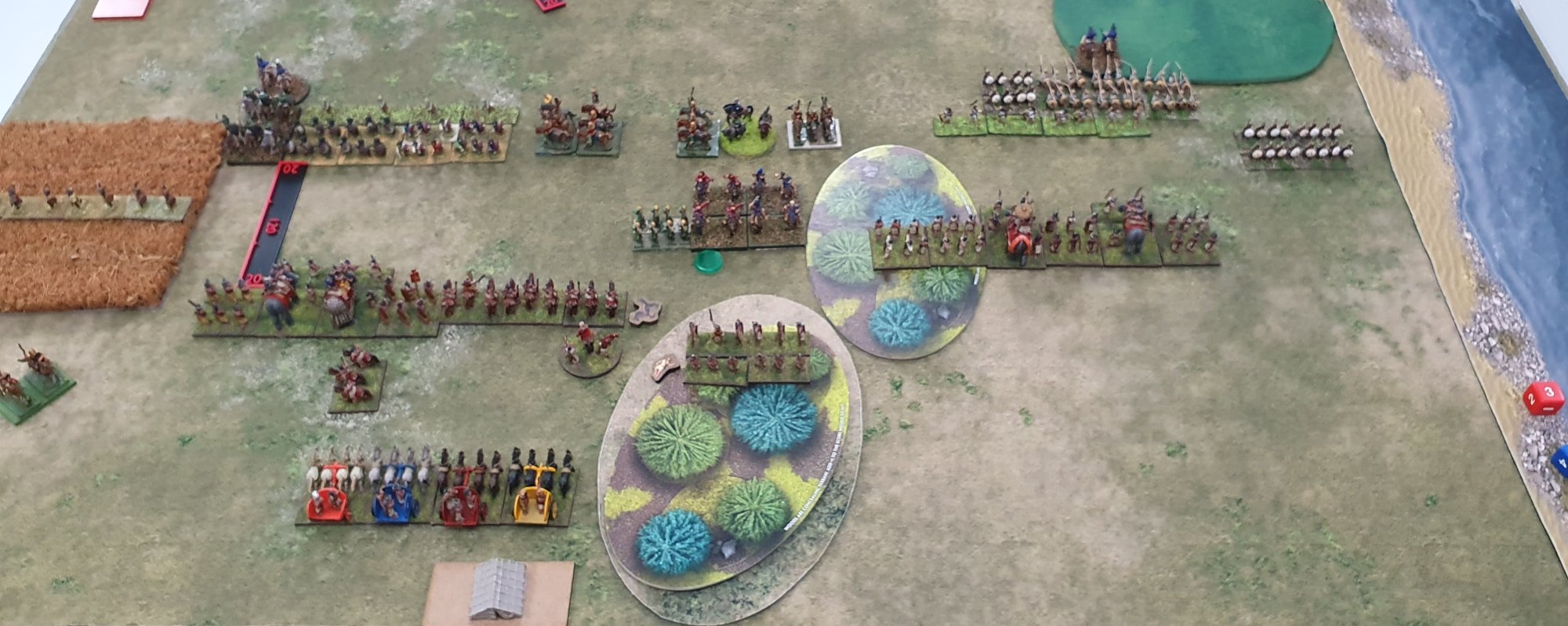
End of Persian Turn Three
The Persians continued to advance. On my left flank the light horse had flanked my main battle line and threatening either my baggage or potentially an attach on my rear. On my right flank the Greek heavy infantry were also working their way to towards my flank.
The Persian heavy cavalry in the centre had turned to reposition themselves, exposing their flanks.
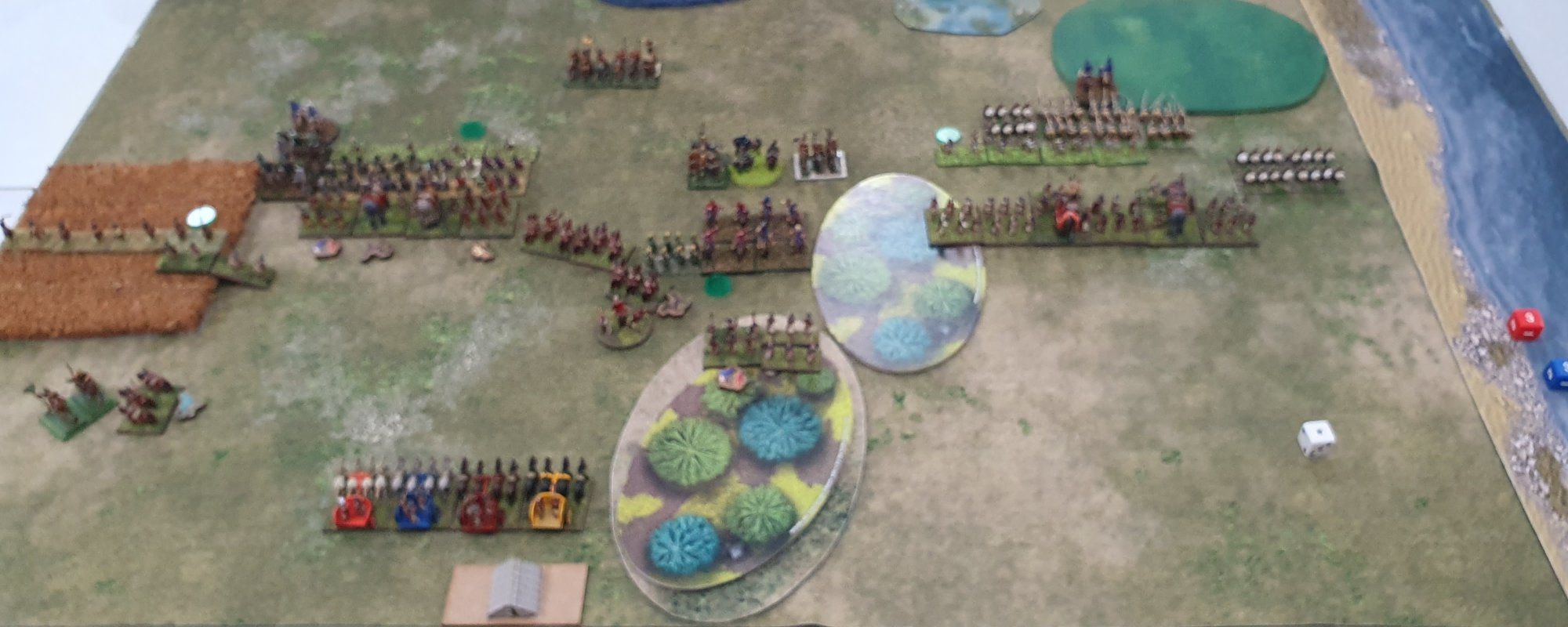 End of
Indian Turn Three
End of
Indian Turn Three
I decided to charge in my combat corps. I realised that missile support negated the furious charge from my elephants, but needed to get into combat. My light infantry moved up to engage the Persian light infantry in the brush. This would hopefully prevent them from attacking my battle line in the flank. Whilst I won the battle of the light infantry, my combat corps faired poorly. Both Guards units lost their combats, as did one elephant.
In the centre I moved by bow back to the edge of the woods and had my medium cavalry charge the flank of the Persian heavy cavalry, which fled. I also moved up one unit of medium cavalry to ZOC the enemy light horse.
On my right flank I moved up my shooting corps.
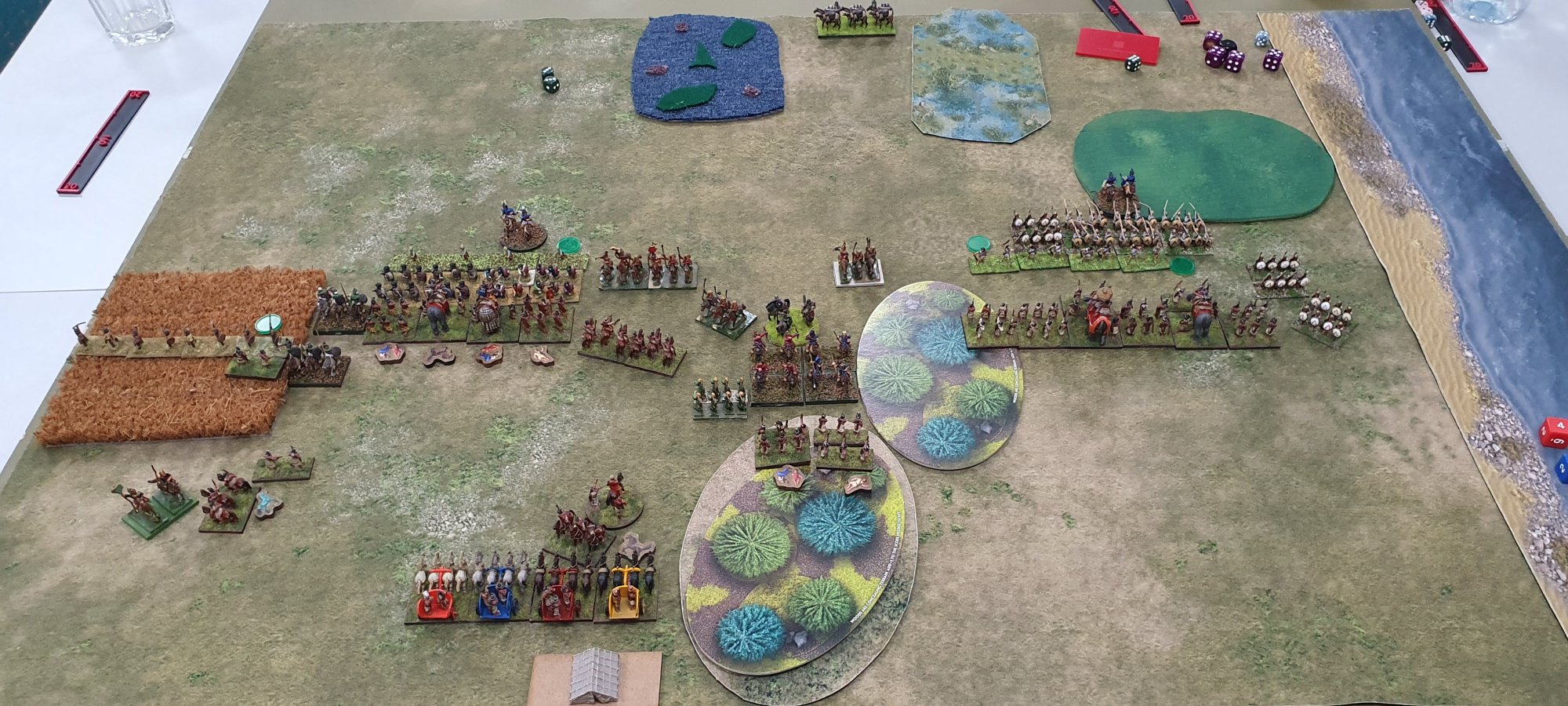
End of Persian Turn Four
The Persian heavy cavalry supporting the combat on my left flank charged my light infantry, which evaded. The second unit of heavy cavalry moved up into support.
In the centre, the Persian Apple Bearers guard unit charged my disrupted medium cavalry unit which also evaded. Inconveniently ending up right in front of my chariots. The heavy cavalry were then manoeuvring to threaten the two remaining units of medium cavalry.
On the right flank, the Greek spear continued to work around my flank.
Things heated up from there and I forgot to take any photos. The game went into turn six, but I lost 24 -10.
The combat corps on my left flank died horribly. The shooting corps on my right flank charged into combat and did a number of hits without routing any units over the rest of the game, and the two Greek spearmen units starting eating in from my flank.
The Chariots took one turn to move forwards and a second to charge the Apple Bearers, but only inflicted two wounds (including furious charge).
I had only routed one unit of light infantry, but had disrupted 8 other units.